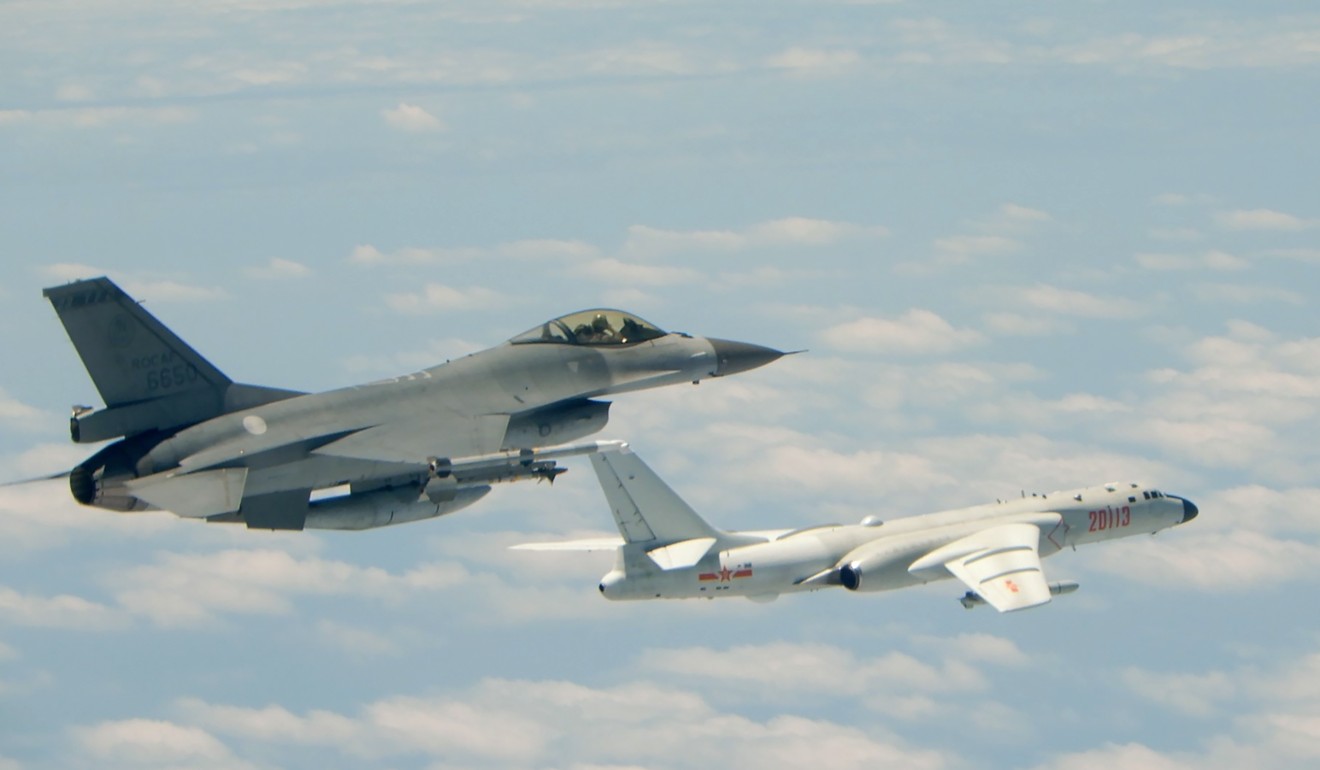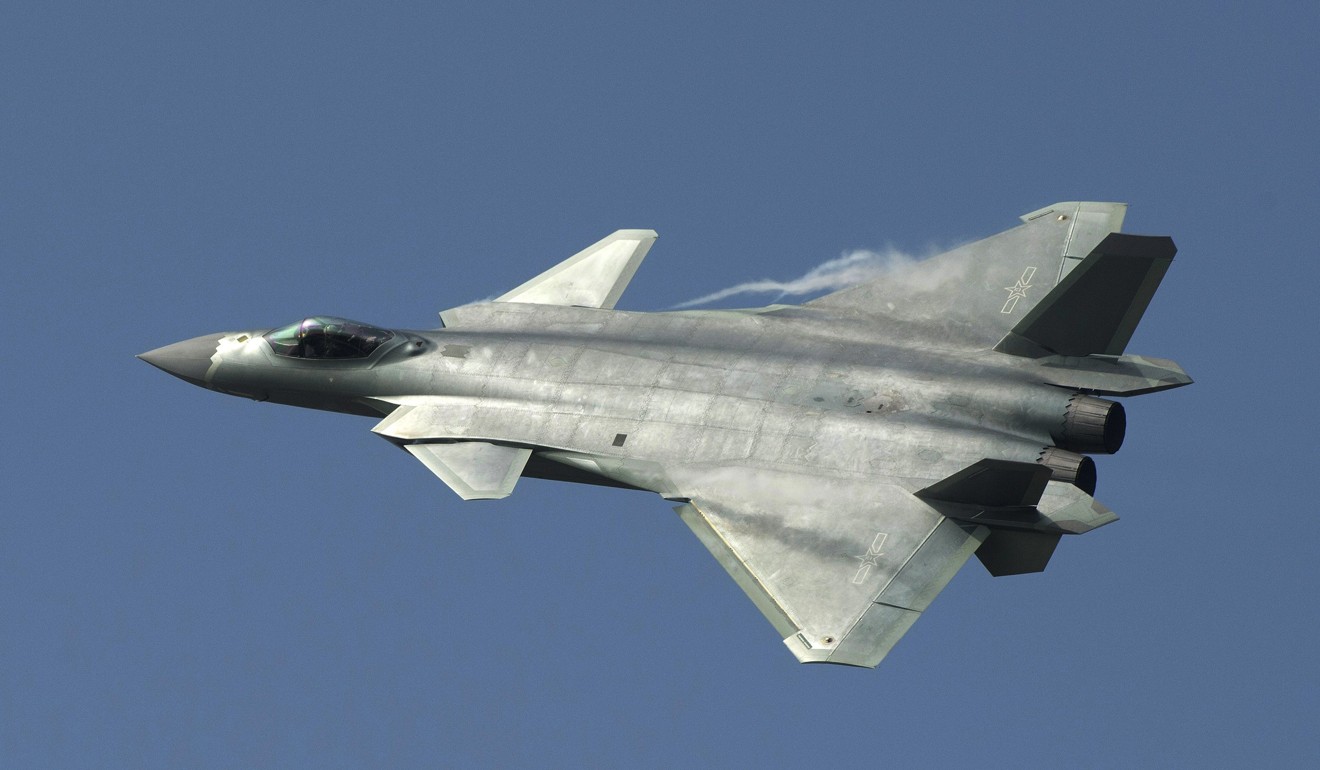
Taiwan’s plan to buy 66 F-16 Viper fighter jets from US still on track, defence ministry says
- Taipei says deal is proceeding despite reports Washington had shelved it pending its trade negotiations with Beijing
- Upgraded versions of F-16s would give Taiwan greater capability to counter air attacks from mainland China, experts say
Taiwan said on Saturday that its plan to buy 66 F-16V fighter jets from the United States remains on course despite reports that Washington has put the sale on hold pending its trade negotiations with Beijing.
A statement issued by the island’s defence ministry said a letter of request had been sent to the US and that things were proceeding as normal.
The notice came after Time magazine reported on Friday that the Trump administration had put the sale on ice while negotiators from the US and China ironed out the final details of their hard-fought trade agreement.

Although the US has a statutory obligation to defend Taiwan, recent administrations have stopped short of allowing it to buy new fighter jets.
According to military experts, the new variant of the F-16, the Viper – which can carry a wide range of short- and medium-range air-to-air missiles – is more able to counter the threat of an air strike from mainland China’s fourth generation aircraft like the Su-35 and J-10.
“This is a strategic opportunity for Taiwan, and Taipei should grab it,” he said.
“In recent years, as it has adjusted its Indo-Pacific strategy to counter [mainland] China, the United States has become more friendly towards Taiwan, even though we all know it’s really about Trump’s ‘America first’ policy.”
This is a strategic opportunity for Taiwan, and Taipei should grab it
The first versions of the single-engine, supersonic multi-role F-16s were made by General Dynamics – which later sold its production to Lockheed Martin – in the 1970s and joined Taiwan’s air force two decades later. According to military experts, the upgrades to the latest variant put it on a par with America’s fifth generation fighters.
For instance, its AESA (advanced electronically scanned array) radar system and electronic warfare devices are similar to those found on the F-22 and F-35 fighters flown by the US.
The AESA is an all-weather system that uses hundreds of tiny transmitting and receiving units – as in the compound eye of a fly – to provide high-resolution detection and imaging of land-based targets.

Andrew Yang Nien-dzu, a former Taiwanese defence minister, said the Viper’s capabilities would be put to good use in the event of an aerial attack from mainland China.
“The F-16V has some very powerful combat and radar systems,” he said. “For example, its AESA can monitor more than a dozen targets at once, and would be able to detect a PLA [People’s Liberation Army] J-20 stealth aircraft at long distance.”
Yang said that Taipei originally planned to bolster its air defences with F-35 fighters, but a huge production backlog meant that even if the US agreed to a deal, the jets would not be ready for at least a decade.
Despite the revision, Yang said the F-16V was a better fit for Taiwan because of its lower maintenance costs.
“Taiwan’s air force has 27 years’ experience in using F-16 series aircraft and has developed a comprehensive system for repairs, logistics and even pilot training,” he said.

In 2016, Taiwan’s defence ministry announced a NT$110 billion (US$3.57 billion) programme to have its existing fleet of 140 F-16s upgraded to the same specification as the F-16V, with the work expected to be completed by 2022.
While the price of the 66 new models is unknown, Taiwanese media earlier valued the deal at between US$7.8 billion and US$8 billion, and said the jets were likely to be ready by late 2020. That would put the cost for a single aircraft in the range of US$118 million to US$121 million.
US Defence News reported earlier that Lockheed Martin sold 19 F-16Vs to Bahrain in 2017 for a total cost of almost US$2.8 billion, or about US$147 million apiece.
While the upgrades and additions to Taiwan’s air force would undoubtedly bolster its fighting capabilities, sealing a deal with the US on the F-16Vs represented more of a political than a military victory for Taipei, according to Beijing-based military expert Zhou Chenming.
“Including all versions of the F-16, the indigenous IDF and the Dassault Mirage 2000, Taiwan has only about 400 fighters,” he said.
“How can it compete with the thousands of warplanes the mainland has? In a war of attrition, victory depends not only on the quality of the weapons, but also the quantity,” he said.
Jiao Guoli, a retired senior colonel from the PLA air force, said the sale of the F-16Vs to Taiwan was also likely to increase uncertainty in the Taiwan Strait and could even be the trigger for a military conflict.
“The PLA has the resources to deal with the challenge of dozens of F-16Vs joining Taiwan’s air force and increasing its tactical capabilities,” he said.
“But as that challenge grows, so does the tension that is brewing between the two sides.”

